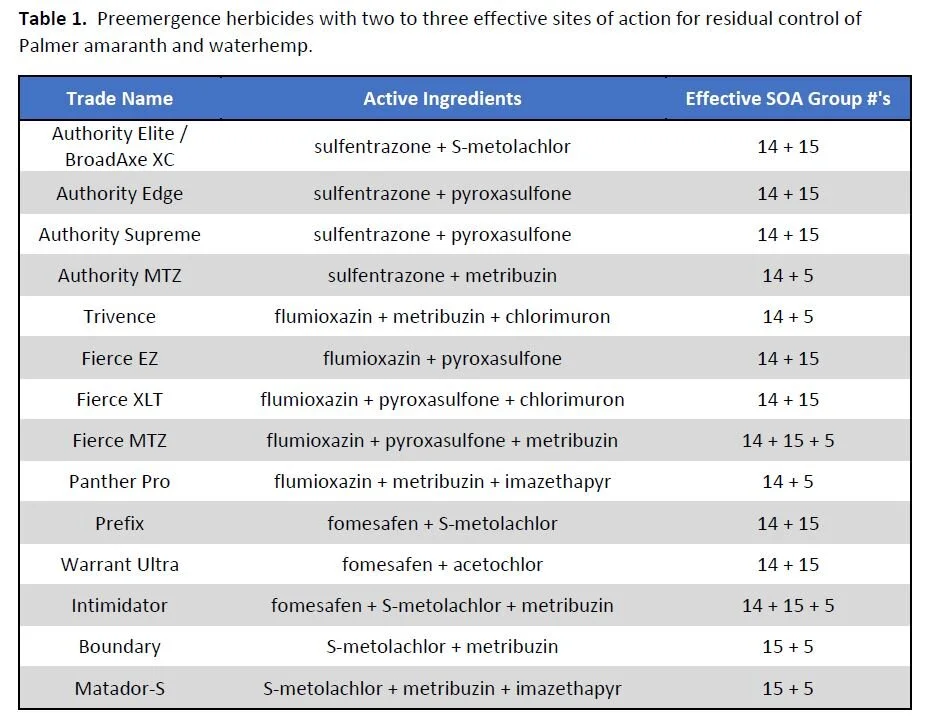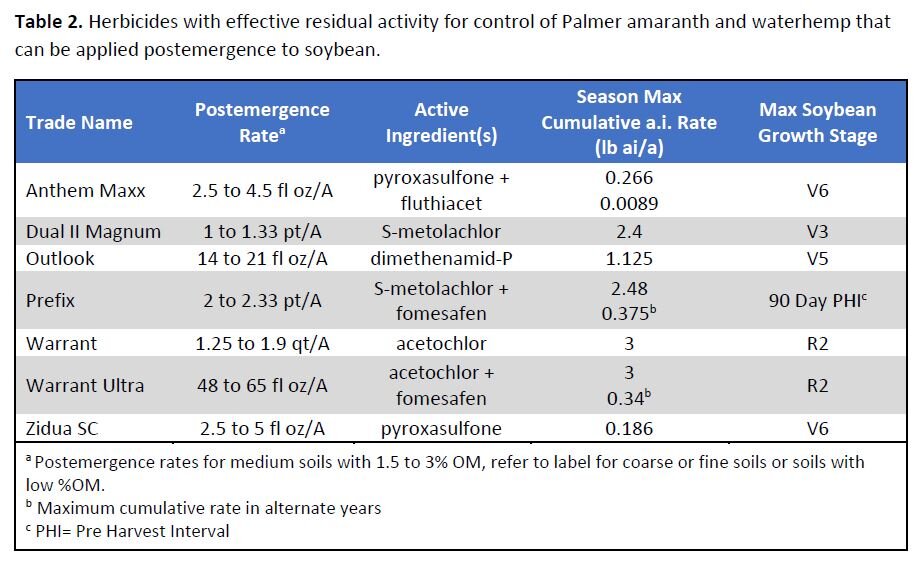Dicamba Alternatives for Palmer Amaranth and Waterhemp Control In RR2X Soybean
Travis Legleiter, Assistant Extension Professor - Weed Science
The EPA has officially canceled the labels of Xtendimax, Engenia, and FeXapan and has ceased the sale and distribution of the three products effective June 3, 2020. The exceptions is that farmers and commercial applicators may apply product that was in their possession, as of June 3, 2020, up until July 31, 2020. These limited applications will still need to follow all previous label restrictions. In addition, Tavium (Dicamba plus S-metolachlor) was not included in the cancelation order and may continue to be sold, distributed, and used per label directions.
If you were fortunate enough to already have product in your possession or your local commercial applicator has product to apply or are able to source Tavium then you can continue to make applications of these products for control of waterhemp and Palmer amaranth under previous label restrictions. Although as always, it is not recommended to apply any of these products in close proximity of susceptible plants (i.e. sensitive soybean, tobacco, and grapes).
There may be a few growers who did not have product in hand, don’t have a local commercial applicator with product in stock, or have access to Tavium; yet have RR2Xtend soybean planted in fields infested with waterhemp and Palmer amaranth. Unfortunately, in this scenario a farmer’s options are very limited due to widespread glyphosate resistance in these two species, and continually spreading PPO resistance. Here are a few scenarios and options grower have if they are in this situation:
Scenario 1. RR2Xtend soybeans planted but not emerged and Palmer/Waterhemp are also not emerged. A robust preemergence residual with at least two if not three effective sites of action should be applied immediately prior to soybean and/or Palmer/waterhemp emergence. A list of products that contain two to three effective sites of action are listed in Table 1. An overlapping residual should be planned as outlined in Scenario 2
Scenario 2. RR2Xtend soybean are emerged, a preemergence herbicide was applied and still active. In this case it is recommended to use an overlapping residual. This is applying another residual herbicide before the original preemergence herbicide breaks. Depending on the environment most preemergence herbicides suppress waterhemp and Palmer emergence for three to six weeks. It is recommended to apply the overlapping residual three to four weeks after the original preemergence herbicide application. This overlapping residual should get you close to crop canopy with minimal emergence.
A list of products that may be applied postemergence in soybean that have residual control of waterhemp and Palmer are listed in Table 2. It should be noted that these products often have the same active ingredients as many preemergence products. A season maximum use rate should be followed if the overlapping and original preemergence herbicides have the same active ingredient. Season maximums are also noted in Table 2 along with maximum soybean growth stage for application and postemergence application rates.
Scenario 3: RR2Xtend Soybeans are emerged and Palmer/Waterhemp are emerged. This is really a worst-case scenario as herbicide options are limited to none. The only option is the use of a PPO-inhibiting herbicide such as Flexstar, Cobra, or Ultra Blazer although there are multiple known populations of PPO-resistant Palmer and waterhemp in the state of Kentucky. Either way these PPO-inhibiting herbicides should be applied to plants that are less the 4” in height, using 15 to 20 GPA carrier volume, and medium droplets to assure quality coverage and maximum efficacy if the weeds are still susceptible.
In this case it is also advised to apply a postemergence residual (Table 2) to suppress any further emergence of waterhemp and Palmer.
Lastly, if a farmer is still planting soybean or will be planting double crop soybean it is recommended to only plant RR2Xtend soybean on acres that do not have infestations of waterhemp and Palmer amaranth due to the limitations now placed on the dicamba products. If you must plant double crop RR2Xtend beans onto infested acres, it is recommended that you use a robust residual and plan for an overlapping postemergence residual for control of the amaranths.


